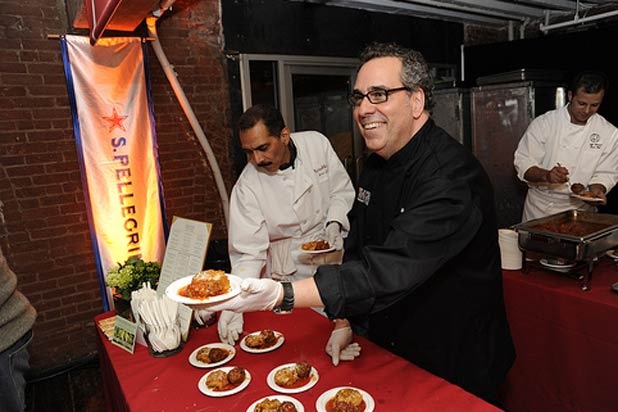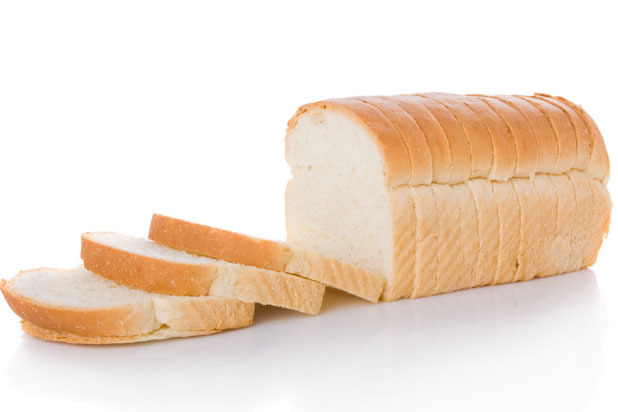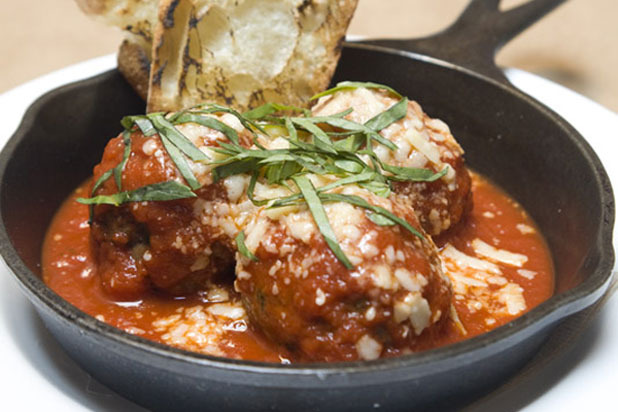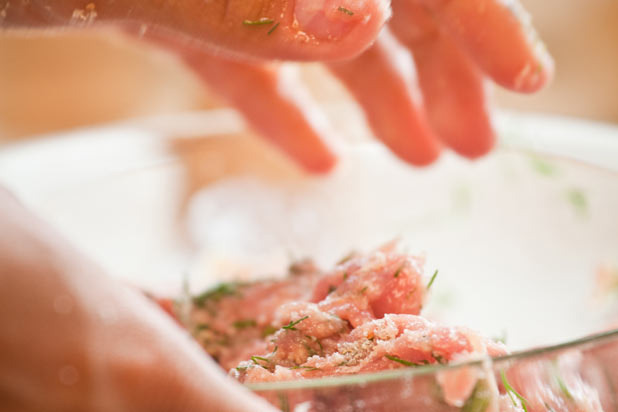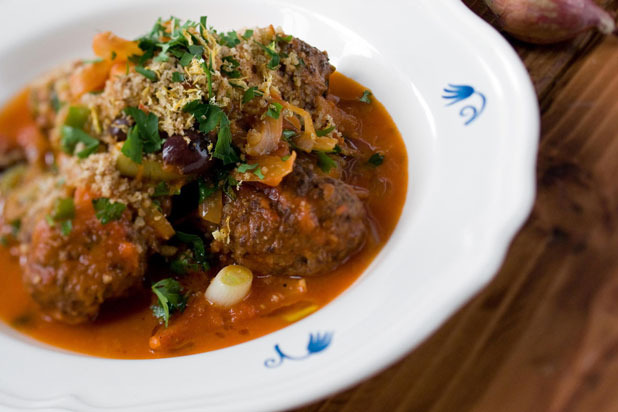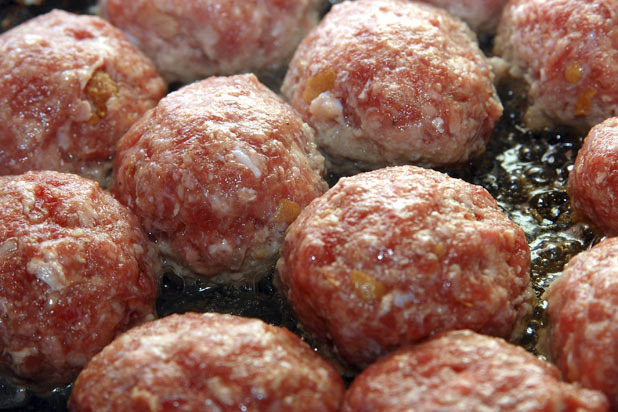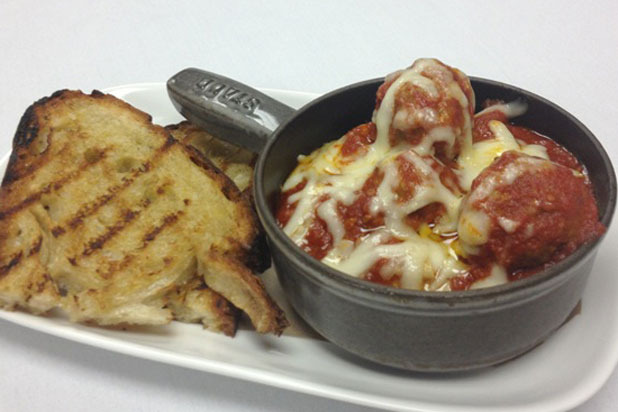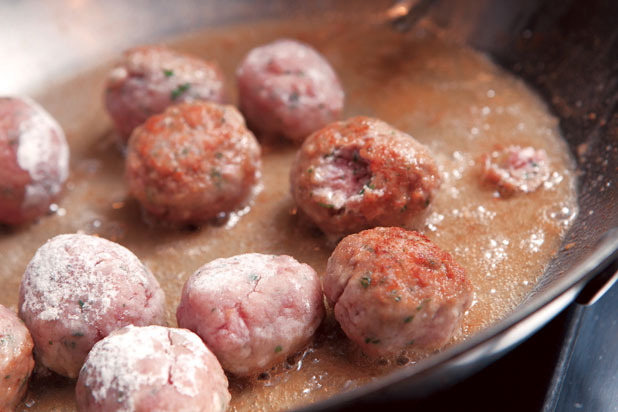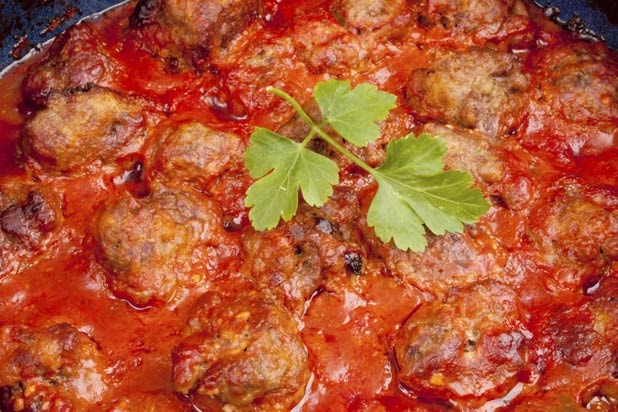How To Make A Better Meatball Slideshow
As Lomonaco points out in his polpettini recipe, it's a blend of beef, pork, and veal. This is a standard tradition in the art of making meatballs, and it's not just done for fun — use all beef and the meatball will be too tough. Lightening up the blend with a light meat, says Lomonaco, will give you a soft, fork-tender meatball that would be impossible not to love.
Polpettini
Lomonaco took some time away from running his busy New York City restaurants to take part in New York City's Wine & Food Festival's Meatball Madness. He dished out plates and plates of these balls at the event and was a runner-up at the event.
Keep It Fresh
While meat is the starting point of your meatball, binding ingredients such as freshly grated cheese, eggs, and breadcrumbs are important as well. Cheese and eggs are pretty hard to screw up (but always remember to use freshly grated cheese!), but Lomonaco warned us about the breadcrumbs. They have to be fresh, even if they're from a loaf of Wonder Bread, because dried breadcrumbs will make your meatball too dense. While breadcrumbs are not usually added for flavoring reasons, Lomonaco doesn't shy away from experimenting with different flavors of bread to get a different taste in his meatball.
Giorgio’s Meatballs
This meatball recipe comes from Michael Ferraro of Delicatessen, and it was passed down from his father, who taught him how to make them at a very young age. When Ferraro joined the team at Delicatessen in 2008, he invited his father into the restaurant to give a lesson to the entire kitchen staff for how to perfect this sacred family recipe. When Ferraro makes meatballs, he soaks his breadcrumbs in a stock instead of milk.
Wet Your Hands
Wet your hands whenever you're forming your meatballs, says Lomonaco. This allows you to handle the meatballs easily enough to shape them without overworking the meat.
Tsoutsoukaki
Or, homemade meatballs with roasted garlic, olives, and tomato sauce. Created by chef Michael Psilakis, these are a Greek take on the standard Italian dish. These meatballs were awarded the Best Meatball of 2007 by both The New York Times and New York Magazine. Although time-consuming, they're worth it, and are a great way to experiment with the flavors of a meatball. Psilakis tells us that if you want to make these balls the night before, follow the recipe through cooking them, then cool and reserve in the refrigerator. Before serving, warm them through in a 325-degree oven, stirring gently so you don't break up the meatballs, and follow through to the last step to finish them.
Method Number One: Frying
There are a couple of different ways you can make your meatballs, and Lomonaco doesn't frown upon any of them. One of the most classic ways is to fry them, but by shallow-frying, as he describes it. Lomonaco advises to always have enough oil in the pan so that the meatballs are submerged, but not too much so that it's like you're deep-frying them. It's also important to remember to turn your meatballs constantly so that they brown evenly, and that they'll take longer than you think they will to cook all the way through.
Morello’s Meatballs
The secret to chef Kevin Garcia's meatballs at his restaurant Morello is thick, decadent brioche bread used as breadcrumbs. Garcia believes in an 80/20 ratio of meat to fat, and warns not to overwork your meat mixture. By overworking it, you force out the air and create a dense meatball. He also likes to make his a day advance and let them sit in the sauce before he serves them.
"Although not scientifically proven, meatballs usually taste better the next day, [because] they have time to absorb the flavor of the tomato braise," he tells us.
Method Number Two: Baking
Another ways to cook your meatballs is in the oven. Lomonaco says to wet your hands with olive oil, instead of water, while shaping the meatballs if you choose the oven, and to make sure they're evenly spaced out on the baking sheet. Times and temperatures vary depending on the size of your meatball and the type of oven you're using, but it's generally around 350 degrees for about 20 minutes.
Sal’s Old-School Meatballs
When we asked Marc Vetri about his thoughts on meatballs, he replied, "My father instilled three things in me [growing up]: 1) Always work for yourself — no matter what; 2) Always have integrity — you are only as good as your word; 3) Always use veal, pork, and beef in meatballs. Life is really that simple!"
We're glad Vetri follows the same mantra as Lomonaco when it comes to his meatballs. He also suggested a great make-ahead tip if you're trying to prep in advance. Meatballs can be rolled in flour and frozen in a single layer on a baking sheet, and then stored in a freezer bag for up to two months.
Method Number Three: Sauce
If you're serving your meatballs with a sauce, you can also use it to simmer your meatballs. This provides a rich, well-rounded flavor to them that is harmonious with the sauce they'll be served in.

